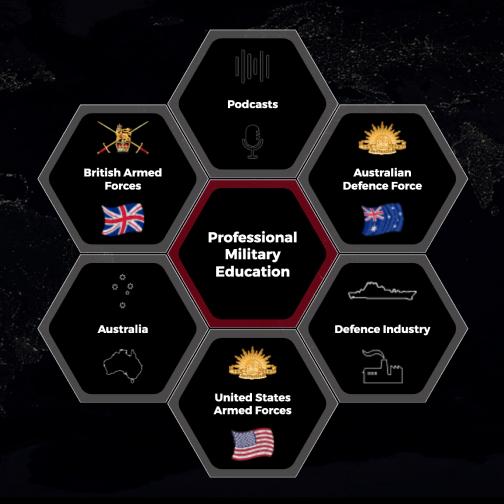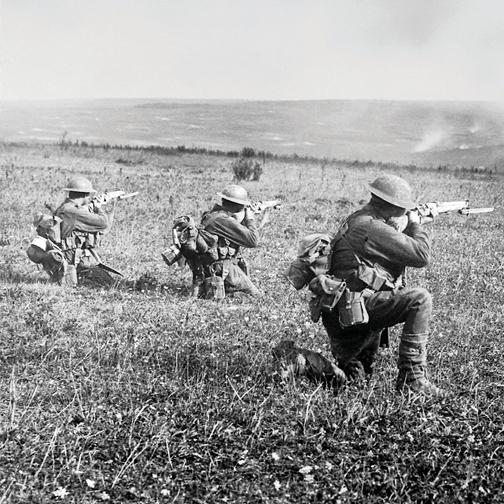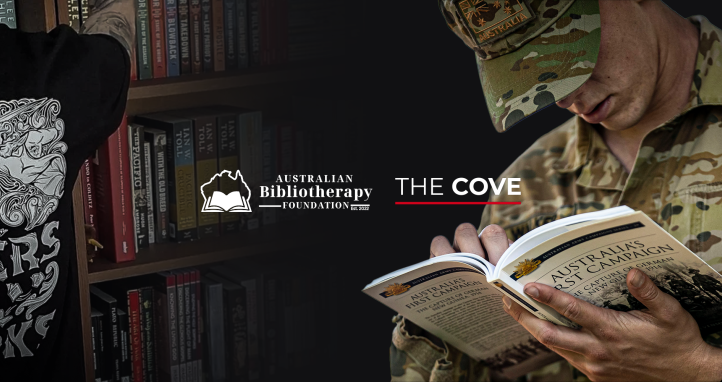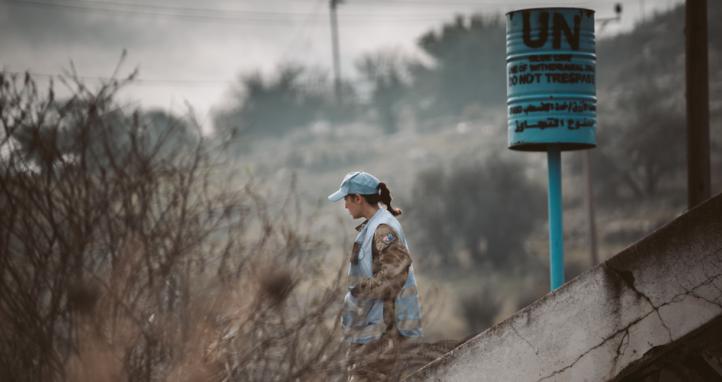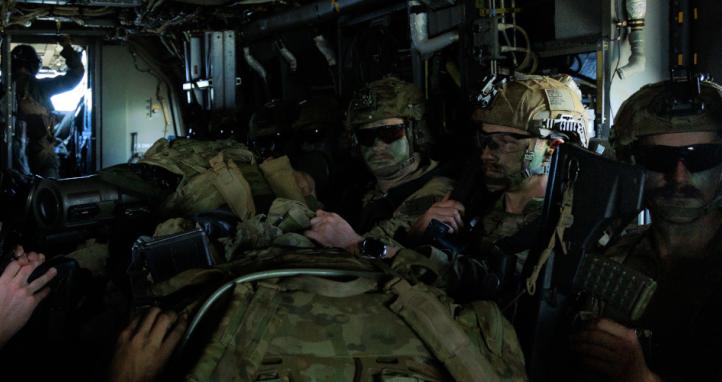The nature of warfare is immutable – a brutal contest of wills. The character of warfare, however, is forever evolving, and we too must evolve or become obsolete. History is replete with military catastrophes where one force failed to embrace the evolving character of war. Our geostrategic environment is rapidly changing, and our Army has responded and adapted to meet this evolution. We are in a period of profound and unprecedented change for our interwar Army. Reorganisations, mergers, redefined roles, and adopting new and emerging technologies are just some changes in response to Army’s contribution to the National Defence Strategy.
Few are unaffected by change. But with change, comes resistance. Resistance is a natural reaction to change, but it can have dire consequences if resistance remains unchecked. Due to the Army’s rigid hierarchical structures and summary consequences, apparent successful change is often artificial, creating a false consensus that recipients are fully entrenched in the change. But, if you dive beneath the waves, you may find deep resentment, social discord, or even cynicism thwarting absolute change. Consequently, we must understand resistance and promote methods to navigate, cultivate and overcome resistance to change.
Why do we resist change?
Resistance is a natural phenomenon and reaction to change. Generally speaking, resistance occurs because it threatens the way people make sense of their environment, calling into question their values and rationality (Sottolano, 2000). Or, it threatens the status quo, or increases fear and anxiety of real or imagined consequences (Hannan & Freeman, 1984; Morris & Raben, 1995). More commonly, resistance may take form due to distrust or resentment to those leading change, or when they have a different understanding or assessment of the situation (Coghlan, 1997; Morris & Raben, 1995).
Failure to clearly define the problem and strategic purpose behind a change initiative may incite resistance. Whatever the cause or motivation, it is important to understand that those resisting change believe that they are resisting for the right reasons, not necessarily because they have an aversion towards authority. It is through this lens that change recipients create a second-order reality that is aloof from the change initiative and first order reality (Levy, 1986).
Background conversations
Jeffrey Ford et al. (2002) propose that resistance is not found ‘in the individual’ but in the co-constructed reality in which individuals operate and is enacted through social interactions. Within this view, participants cannot know any ‘true’ reality independent of themselves, meaning that ‘different people in different positions at different moments live in different realities’ (Shotter, 1993, p. 17). Simply put, our background conversations and interactions co-construct an independent reality built upon to form a different reality with every new interaction.
In co-constructed realities, the more conversations that support, are attached to, or are in some way associated with a particular conversation, the more ‘pull’ there is to keep that conversation in place and the more apparent support there is for that conversation (Ford et al., 2002). Much of what people know about their world comes from conversations passed on by others, rather than from direct experience (Ford et al., 2002). When individuals have experienced change – either directly or vicariously through conversations – they bring these stories or experiences from the past into the present change initiative. Effectively, it is the past being made the present. And, when you combine these factors into background conversations, we unconsciously objectify them to make these stories as real as the furniture in the office.
Consequently, change recipients believe resistance is necessary to promote their view and have a voice against the change initiative that, in their reality, is flawed or not in the best interests of the team or organisation. With a grounding on how resistance manifests and pervades our conversations to generate a socially constructed reality, we can explore some practical ways to overcome this natural phenomenon.
How to Overcome Resistance to Change
Dialogic v Monologic Communication
Change leaders must not underestimate the power and influence of their dialogue when communicating change. Monologic, or Cartesian style of communication, is based on a singular treatment that pushes for a dominant view of how change should proceed (Jabri & Jabri, 2022). And, whilst we consider our organisation a unidirectional institution that communicates top-down, this approach fails to engender buy-in as change recipients may not appreciate the strategic purpose for change.
On the contrary, dialogic, or relational communication, creates multiple channels to allow change to include varying viewpoints, as it relies on rolling out multiple sources of narratives and experiences (Jabri & Jabri, 2022). Dialogism influences buy-in, as it creates a sense of purpose for recipients who are included in the problem and ultimate change. Additionally, dialogism is less likely to face resistance when compared to a monologic communicator who failed to solicit buy-in on the premise that their view is absolute.
Importantly, change recipients will respond more to the way a change leader communicates change, not to the change initiative itself. When communicating change, change leaders subconsciously co-construct a recipient's reality by infecting and reinfecting with every new interaction. As such, how you communicate (recursive – glass half-empty vice versa discursive – glass half-full) will largely influence the voice narrative and the attitude towards the change initiative. Therefore, change leaders often influence the socially constructed reality more than the change recipients do.
Stop Blaming Resistance and Engage it
Stop blaming resistance. Rather, engage it as a valuable resource to drive change. Leaders should never presume resistance is a unilateral phenomenon that is only happening 'over there, in those resisting', and that change would succeed if not for the irrational and self-serving actions of those blocking or deflecting the change.
This simple conviction fails to acknowledge what is a two-sided story and obviates it as a possible contribution to defining and implementing a proposed change (Ford 2010). All stakeholders are invariably a cog in the wheel, and we must engage resistance rather than disparage it.
When you engage resistance, you bring assumptions, decisions, and conclusions to the forefront for examination and you open up deeper, more meaningful dialogue that may not otherwise be available (Ford & Ford, 2010). Engaging resistance through dialogism opens possibilities for all stakeholders to confirm the strategic objectives, and the purpose behind the change and even refine the change plan.
Often, this can be a more powerful tool than say, change recipients apathetically getting on with the job. A Cartesian approach will always be resident in the military, but we must be judicious and engage resistance when faced with attitudinal and cultural resistance. Resistance is feedback, and failure to engage resistance robs change leaders of a powerful lever to improve upon and implement the change initiative.
Close the past
Background conversations bring history and the background into the present utterance by responding to, reaccentuating, and reworking past conversations while anticipating and shaping subsequent ones (Ford et al., 2002). These conversations are often fuelled and kept alive by former change that was poorly messaged, led, and executed. Change recipients hyper-focus on stories of past failures, which slowly work themselves into background discussions on the present change initiative until they are objectified within their socially constructed reality.
These backgrounds are constituted by past responses to success and failure, and it can be said that the incomplete past has defined the future (Ford et al., 2002). Until the past is closed, recipients cannot envisage a future where the change initiative is positive or attainable.
Ford and Ford (1995) state that conversations for closure give recipients an opportunity to be acknowledged for what they have done and not done, to recognise the expectations that have and have not been fulfilled, and to discover and express their commitments for the future. By engaging in open dialogue and examining past failures and unpleasant experiences – including those during the current initiative – you allow recipients to air their grievances.
Doing so explores why a change initiative went wrong, and what actions could have removed barriers and enhanced that experience. Consequently, you inadvertently identify potential pitfalls, unforeseen barriers, and a viable pathway forward. Accordingly, equilibrium is restored and together you co-construct a new second-order reality while maintaining the first-order reality – that is, the change is happening, but the implications of the change are viewed differently (Hannan & Freeman, 1984). The new background contains possibilities, opportunities, and problems that differ from those that existed before the conversation for closure and that provide new openings for future change.
Final thought
Resistance to change is inevitable. How a leader or organisation deals with resistance will define the degree of success or failure. In the military, leaders should never assume a change initiative is being received without cultural discord or attitudinal resentment. Change leaders must actively listen to the background conversations that are shaping and reshaping the change narrative, and with that, the socially constructed reality that is often far removed from the factual reality.
To reduce the depth of resistance, leaders are urged to deliver the change initiative in a dialogic, relational mode that communicates the strategic purposes and engenders buy-in by making recipients part of the problem and solution. Do not blame resistance; rather, engage it as a valuable source of feedback to identify potential pitfalls or unforeseen barriers.
And, finally, close the past to empower participants to recognise new possibilities and opportunities. By implementing these practical methods, your change experience will be less encumbered with turbulence, apprehension, and resistance; resulting in a team and unit with an improved culture, and one that is agile and receptive to future change.
References
Coghlan, D. (1997). Leading Change: Overcoming the Ideology of Comfort and the Tyranny of Custom. International journal of organizational analysis (2005), 5(1), 103.
Ford, J. D., & Ford, L. W. (1995). The Role of Conversations in Producing Intentional Change in Organizations. The Academy of Management review, 20(3), 541-570. https://doi.org/10.2307/258787
Ford, J. D., & Ford, L. W. (2010). Stop blaming resistance to change and start using it. Organizational dynamics, 39(1), 24-36.
Ford, J. D., Ford, L. W., & McNamara, R. T. (2002). Resistance and the background conversations of change. Journal of Organizational Change Management, 15(2), 105-121. https://doi.org/10.1108/09534810210422991
Hannan, M. T., & Freeman, J. (1984). Structural Inertia and Organizational Change. American sociological review, 49(2), 149-164. https://doi.org/10.2307/2095567
Jabri, M., & Jabri, E. (2022). Managing Organizational Change (Third edition ed.). Bloomsbury.
Levy, A. (1986). Organizational transformation.
Morris, K. F., & Raben, C. (1995). The fundamentals of change management. Discontinuous change: Leading organizational transformation, 47, 65.
Shotter, J. (1993). Conversational realities: Constructing life through language. Sage.
Sottolano, D. L. (2000). Facilitating cognitive reframing and organizational readiness for large -scale change: A model of leadership, structural, and cultural dimensions ProQuest Dissertations & Theses].
